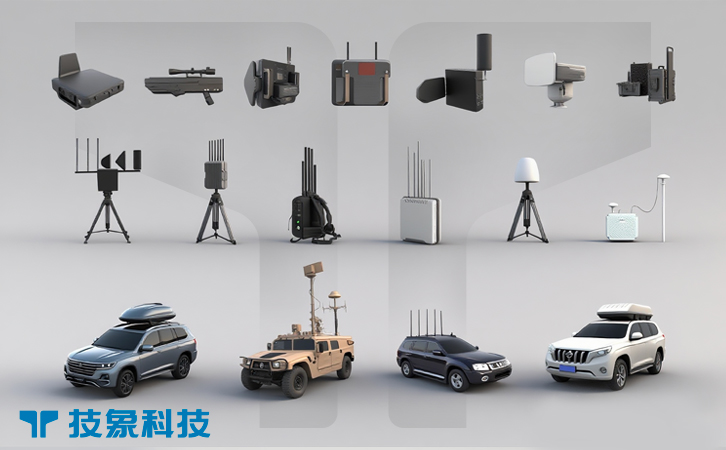As drones become ubiquitous, with over 6 million commercial units in use globally in 2025, the need to counter rogue UAVs—used for smuggling, espionage, or disruptions—has intensified. However, counter-drone systems (C-UAS) face a critical challenge: false alarms, where benign objects like birds or legitimate drones are mistaken for threats, leading to wasted resources, disrupted operations, or unnecessary escalations. In busy airspaces, such as airports or urban centers, false positives can overwhelm security teams, undermining trust in detection systems. Advanced technologies, particularly AI and multi-sensor fusion, are pivotal in reducing these errors, ensuring accurate identification of rogue drones. This article explores the causes of false alarms, AI-driven solutions, integration strategies, and future advancements, emphasizing the importance of precision in counter-drone warfare.
I. The Problem of False Alarms in Drone Detection
False alarms in C-UAS arise when detection systems misidentify non-threatening objects or activities as rogue drones, a pervasive issue in complex environments. In 2025, airports like London Heathrow report over 500 drone-related alerts annually, with up to 40% being false positives caused by birds, weather balloons, or authorized UAVs. These errors strain security resources, delay flights, and erode public confidence, as seen in the 2018 Gatwick Airport shutdown, where misidentified objects halted operations for 36 hours, costing millions.
The primary culprits are environmental and operational factors. Radar systems struggle to differentiate small drones (with radar cross-sections below 0.01 m²) from birds, especially in urban areas where ground clutter like buildings or vehicles obscures signals. RF sensors can misinterpret Wi-Fi or cellular signals as drone communications, particularly in crowded spectra near cities. Acoustic sensors are prone to errors from ambient noise, such as helicopters or traffic, while optical systems may confuse kites or drones flown legally nearby. In 2025, the U.S. FAA notes that false alarms increase response times, with 20% of alerts requiring manual verification, diverting attention from genuine threats like smuggling drones at borders or espionage UAVs near military bases. Reducing these errors is critical to maintain operational efficiency and focus resources on real threats, driving the need for smarter, more accurate detection systems.
II. AI-Driven Solutions for Enhanced Accuracy
Artificial intelligence (AI) and machine learning (ML) are revolutionizing counter-drone detection by minimizing false alarms through advanced pattern recognition and data analysis. AI algorithms, trained on millions of flight and signal datasets, distinguish drones from non-threats with high precision. For example, Dedrone’s DedroneTracker, deployed in 2025, uses neural networks to analyze radar, RF, acoustic, and optical inputs, reducing false positives by 95% in urban tests by identifying drone-specific signatures, such as propeller micro-Doppler patterns or unique RF protocols.
AI enhances radar by filtering clutter, recognizing bird flight patterns versus drone trajectories, and adapting to environmental variables like wind or rain. RF detection benefits from ML models that differentiate drone signals from civilian Wi-Fi, even in congested spectra, as seen in 2025 deployments at U.S. stadiums. Acoustic systems leverage AI to isolate drone propeller sounds from background noise, with Squarehead’s Discovair achieving 90% accuracy in noisy urban settings. Optical systems use computer vision to classify drone shapes against birds or balloons, with EO/IR cameras like those from FLIR improving identification in low-light conditions.
These solutions rely on continuous learning, where AI updates its database with new drone models and behaviors, countering evolving threats like AI-enabled drones that mimic benign objects. In 2025, cloud-based AI platforms enable real-time data sharing across C-UAS networks, ensuring rapid adaptation. While computationally intensive, edge computing reduces latency, allowing on-site processing to minimize false alarms, making AI a cornerstone of reliable drone detection.
III. Integration Strategies to Minimize Errors
Reducing false alarms requires integrating multiple detection technologies to create a robust, layered C-UAS framework that cross-validates data. Multi-sensor fusion combines radar, RF, acoustic, and optical inputs, with AI synthesizing them to confirm threats. For instance, DroneShield’s DroneSentry-X, used in 2025 airport trials, integrates RF for signal detection, radar for tracking, and cameras for visual confirmation, reducing false positives by 80% compared to single-sensor systems. This approach ensures that a bird detected by radar is cross-checked against RF and optical data, preventing erroneous alerts.
Integration with command-and-control systems, like Northrop Grumman’s AiON, prioritizes alerts based on threat probability, streamlining operator responses. In 2025, urban deployments at events like the Olympics used such systems to filter out authorized drones, ensuring only rogue UAVs triggered alerts. Real-time data sharing with air traffic control (ATC) systems, per FAA guidelines, prevents misidentification of commercial UAVs, critical in busy airspaces. Training operators to interpret AI-generated alerts is essential, as human oversight catches edge cases, like novel drone designs.
Challenges include system interoperability, as proprietary platforms can create data silos, and high computational demands for real-time fusion. The 2025 Counter UAS Technology USA Conference highlighted open architectures as a solution, enabling seamless sensor integration. These strategies ensure C-UAS systems are accurate and efficient, minimizing disruptions while focusing on genuine threats in complex environments.
IV. Challenges and Future Innovations
Despite advancements, reducing false alarms faces significant hurdles. Environmental factors, like urban clutter or weather, degrade sensor performance, with radar false positives rising 30% in rainy conditions. Autonomous drones, which emit minimal RF signals, evade traditional detection, requiring advanced AI to predict their behavior. Costs remain a barrier—AI-driven systems like DedroneTracker can exceed $50,000, limiting adoption by smaller facilities. Regulatory constraints, such as FCC limits on RF scanning, complicate deployments in civilian areas, risking fines up to $100,000.
Privacy concerns arise from pervasive monitoring, as RF and optical sensors may capture civilian data, necessitating transparent protocols, as urged in 2025 policy debates. Future innovations promise solutions: by 2030, quantum-enhanced sensors will improve signal resolution, reducing errors by 40%. Neuromorphic computing, mimicking human brain processing, will lower power needs for AI, making systems more affordable. Blockchain-secured data sharing, tested in 2025 EU trials, will enhance multi-sensor networks, ensuring trust and accuracy. Autonomous C-UAS platforms, like drone-based sensors, will dynamically adapt to threats, as showcased at the 2025 Maritime Counter UAS Conference. These advancements will make false alarm reduction more achievable, enhancing C-UAS reliability across diverse settings.
Conclusion
False alarms pose a critical challenge to counter-drone systems, diverting resources and undermining trust in busy 2025 airspaces. AI-driven solutions, multi-sensor integration, and strategic deployments are significantly reducing errors, ensuring precise detection of rogue UAVs. From airports to stadiums, these advancements enable security teams to focus on genuine threats like smuggling or espionage. Despite challenges like costs, regulations, and environmental factors, future innovations in quantum sensors and autonomous systems promise greater accuracy. By investing in these technologies and fostering clear policies, stakeholders can enhance C-UAS effectiveness, securing airspaces with confidence and precision in an era of escalating drone threats.



